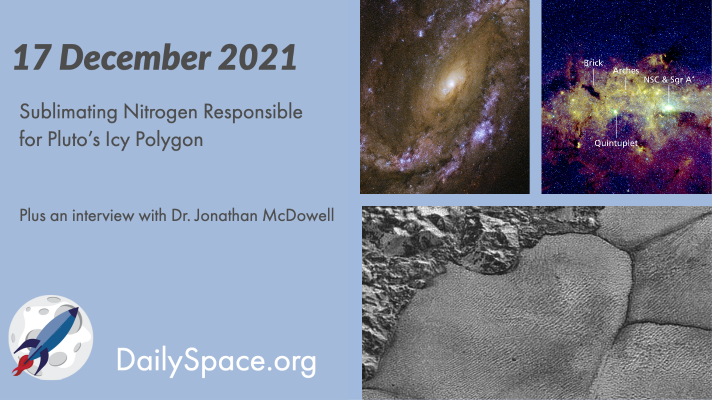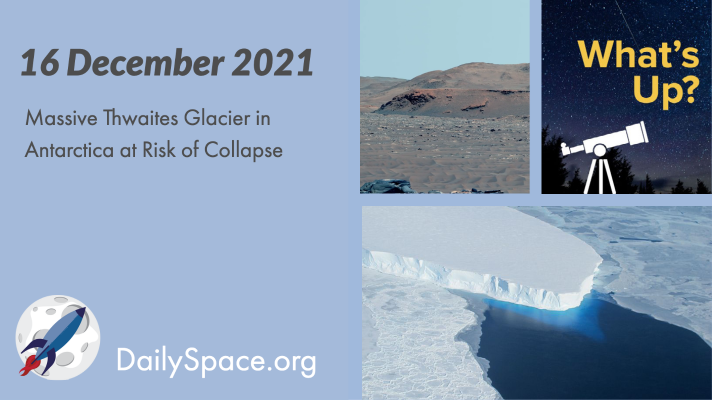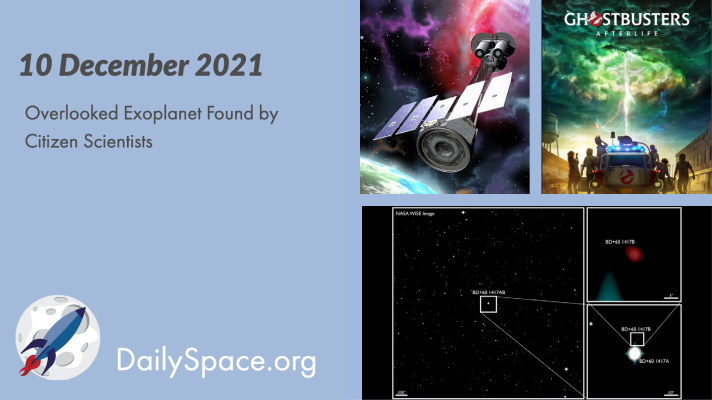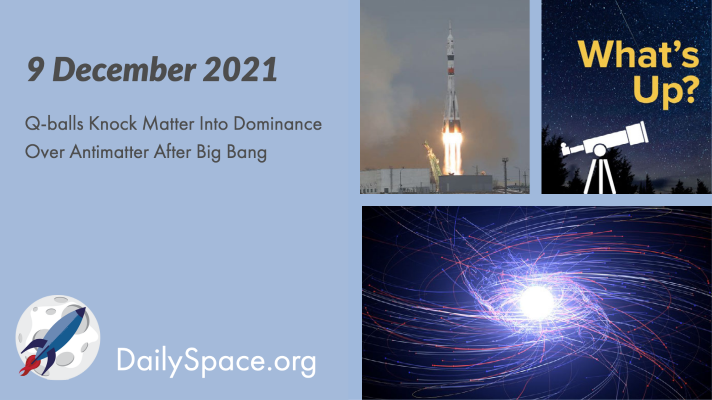
Dec 21, 2021 | Active Galaxies, Daily Space, Guest Interview, Pluto & Charon, Spacecraft, Star Forming Region, Stars, Supermassive Black Holes
New models of sublimating nitrogen show that the process creates enough heat to drive the formation and texture of the polygons in Sputnik Planitia. Plus, black holes, star formation, and an interview with Dr. Jonathan McDowell, orbital police.

Dec 17, 2021 | AGU, Climate Change, Curiosity, Daily Space, Earth, Mars, Our Solar System, Perseverance, Rovers, Sky Watching, Star Forming Region, The Sun, Venus
A team of scientists collected cores and modeled ice cliff failure and found that Thwaites Glacier in Antarctica is melting more quickly than ever and could be at risk of collapse, threatening global coastlines with almost a meter of sea-level rise. Plus, new results from Percy, and this week’s What’s Up.

Dec 16, 2021 | Blue Origin, Crewed Space, Daily Space, Moon, Random Space Fact, Rocket Lab, Rockets, ROSCOSMOS, Space China, Space History, Spacecraft
On Rocket Roundup, launches include the latest from Rocket Lab, a Blue Origin crewed launch, several Chinese launches, and a pair of Russian communication satellites. Plus, this week in rocket history, we look back at Apollo 17.

Dec 15, 2021 | Active Galaxies, AGU, Asteroids, Daily Space, Exoplanets, Mars, Milky Way, Review, Stars, Supermassive Black Holes
Using the ESO’s Very Large Telescope Interferometer, scientists have obtained the deepest and sharpest images of Sagittarius A*, the black hole at the center of the Milky Way. They tracked the orbits of stars and were able to more precisely measure the mass of the black hole. Plus, new ways to research meteors, and a review of a Peak Design camera anchor system.

Dec 13, 2021 | Brown Dwarf, Citizen Science, Climate Change, Daily Space, Earth, Exoplanets, Milky Way, Review, Rockets, Spacecraft, SpaceX, Supermassive Black Holes
Using data provided by the Backyard Worlds: Planet 9 citizen science project, volunteers found a possible large planet or brown dwarf orbiting its star at a distance of more than 1,600 astronomical units. Plus, NASA launches the Imaging X-ray Polarimetry Explorer, and we review Ghostbusters: Afterlife.

Dec 10, 2021 | Asteroids, Cosmology, Crewed Space, Daily Space, Exoplanets, Galaxies, Gemini South, Guest Interview, Rockets, ROSCOSMOS, Sky Watching, Soyuz, Spacecraft, Very Large Array
Researchers hypothesize that blobs in post-Big Bang fields of energy, known as Q-balls, could explain how matter came to dominate over antimatter in our Universe, and they plan to use gravitational waves to find their evidence. Plus, a crewed launch to the ISS features Japanese tourists, NASA selects the latest astronaut class, and What’s Up is the Geminids.








 We record most shows live, on Twitch. Follow us today to get alerts when we go live.
We record most shows live, on Twitch. Follow us today to get alerts when we go live.